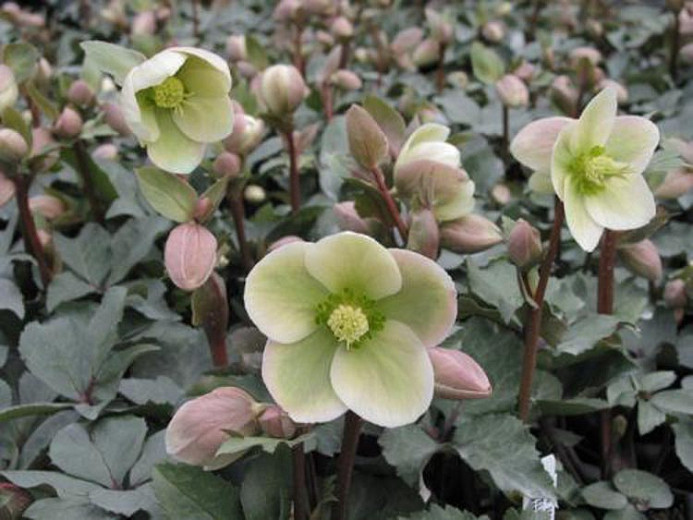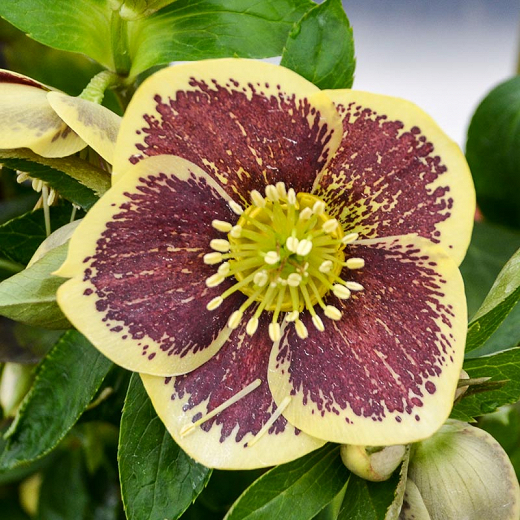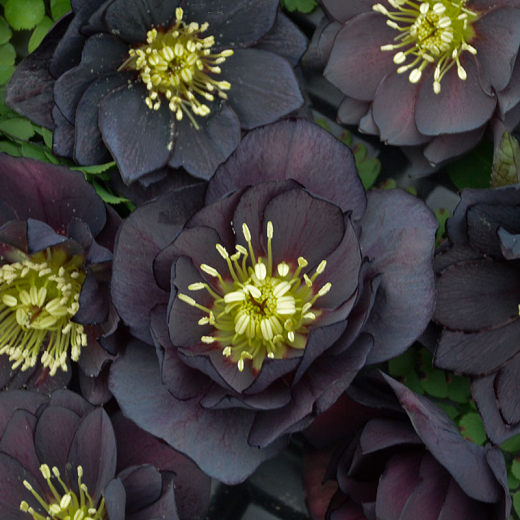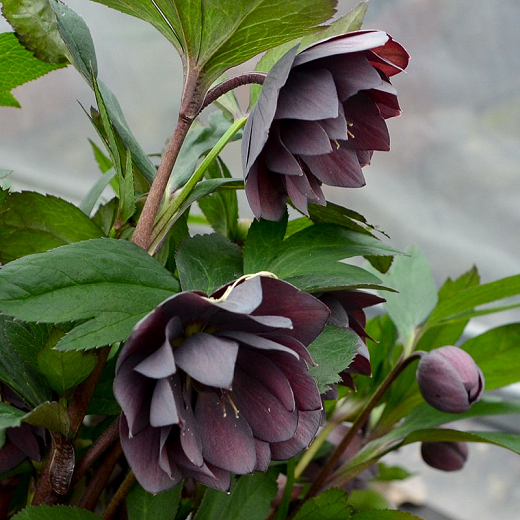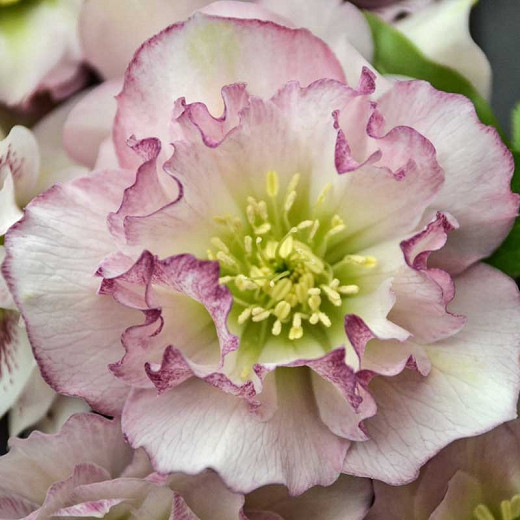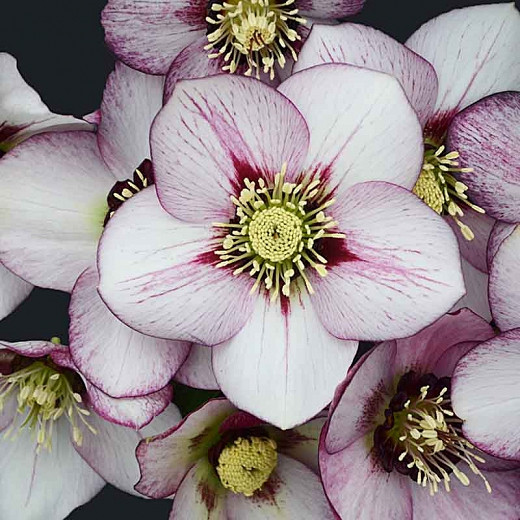Helleborus Ivory Prince (Christmas Rose)
Helleborus ‘Ivory Prince’ or ‘Walhelivor’ (Christmas Rose) is the pretty result of a breeding program designed to produce vigorous, compact, and upright hellebores with flat flowers for best display.
Helleborus 'Ivory Prince' or 'Walhelivor' (Christmas Rose) is the pretty result of a breeding program designed to produce vigorous, compact, and upright hellebores with flat flowers for best display. Opening from rich burgundy-pink flower buds, plentiful creamy white flowers, 2-3 in. wide (5-7 cm), appear from late winter to early spring. Unlike most hellebores, the flowers face outward attracting interest. As they mature, they take on charming rose and chartreuse shades. These dainty beauties rise on sturdy, reddish stems above particularly handsome foliage of leathery, deeply lobed, evergreen leaves with silver veining. Showy and long-lasting, ideal to brighten the shade garden!
- Grows in a bushy, upright clump, up to 12-18 in. tall (30-45 cm) and 18-24 in. across (45-60 cm). This perennial will self-seed in satisfactory growing conditions.
- Performs best in part shade in fertile, humus-rich, moist, neutral to alkaline, well-drained soils. Can tolerate some sun. Avoid soils prone to drying out or staying wet.
- Select a sheltered site to protect your hellebores from cold winter winds.
- Easy to grow, this plant is a welcomed addition to shady borders, city gardens, under trees or large shrubs, woodland gardens, coastal gardens, rock gardens, or cottage gardens. Plant in groups for the best visual impact.
- Hellebore flowers provide valuable nectar for early pollinators. Hellebore is not generally a plant that deer or other animals seek out to eat, but if other food sources are scarce, they may come along and make a meal out of your Hellebore.
- No serious pest or disease issues. Keep an eye out for aphids, snails, hellebore leaf spot, and hellebore black death.
- Remove faded or damaged foliage as the flowers appear.
- Propagate by seed sown in pots in a cold frame as soon as seed is ripe, or by division in late spring after flowering. Seedlings may not come true.
- Ingestion may cause severe discomfort, skin irritant. Wear gloves and other protective equipment when handling.
- Toxic to dogs, toxic to cats, toxic to horses, toxic to humans.
Requirements
| Hardiness | 3 – 8 |
|---|---|
| Heat Zones | 5 – 9 |
| Climate Zones | 3, 4, 5, 6, 7, 14, 15, 16, 17 |
| Plant Type | Perennials |
| Plant Family | Helleborus – Hellebores |
| Exposure | Full Sun, Partial Sun |
| Season of Interest | Spring (Early)Winter |
| Height | 1' – 2' (30cm – 60cm) |
| Spread | 1' – 2' (30cm – 60cm) |
| Spacing | 24″ (60cm) |
| Water Needs | Average |
| Maintenance | Low |
| Soil Type | Chalk, Clay, Loam |
| Soil pH | Alkaline, Neutral |
| Soil Drainage | Moist but Well-Drained |
| Characteristics | Showy, Evergreen |
| Tolerance | Deer, Rabbit |
| Garden Uses | Beds and Borders, Underplanting Roses and Shrubs |
| Garden Styles | City and Courtyard, Coastal Garden, Gravel and Rock Garden, Informal and Cottage, Prairie and Meadow |
